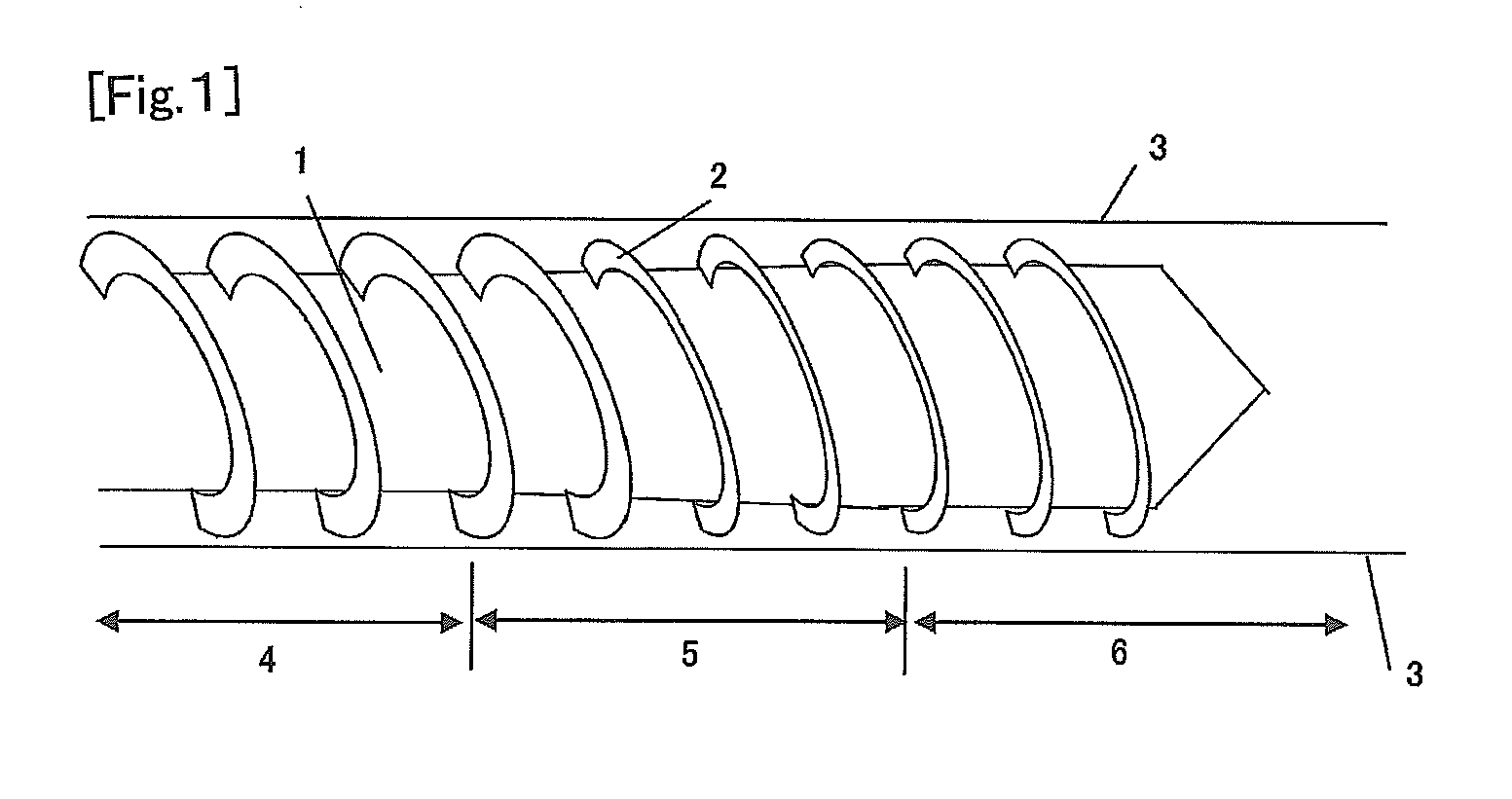Polyester film
a technology of polypropylene and polypropylene, applied in the field of polypropylene films, can solve the problems of uneven thickness uneven thickness, etc., and achieve the effect of reducing the thickness of the film, uneven lamination surface, and reducing the thickness
- Summary
- Abstract
- Description
- Claims
- Application Information
AI Technical Summary
Benefits of technology
Problems solved by technology
Method used
Image
Examples
example 1
Preparation of a Polyester Resin Obtained by Recycling PET Bottles
[0068]A recycled polyester raw material was obtained by washing PET bottles for beverages to remove foreign matters such as the remaining beverage, thereafter melting the flakes obtained by pulverizing the PET bottles by an extruder, further changing the filter with a filter having a smaller mesh size, then separating the fine foreign matters by filtration twice, and then separating the fine foreign matters by third filtration using a filter with the smallest mesh size of 50 μm. The obtained resin had a composition of terephthalic acid / isophthalic acid / / ethylene glycol=97.0 / 3.0 / / 100 (mol %), and the intrinsic viscosity of the resin was 0.70 dl / g. The resin was named as a polyester A.
(Production of a Film)
[0069]A film was produced using a poly(ethylene terephthalate) resin of terephthalic acid / / ethylene glycol=100 / / 100 (mol %) as a polyester B having an intrinsic viscosity of 0.62 dl / g, and a master batch containing, a...
example 2
[0071]A biaxially stretched polyester film having a thickness of 18 μm was obtained by the same method as that in Example 1, except that the polyester raw materials were mixed in a manner that A / B / C could be 80 / 10 / 10 (weight ratio).
example 3
[0072]A biaxially stretched polyester film was obtained by the same method as that in Example 2, except that the resin temperature was set at 305° C. for 45 seconds from the starting point in the compaction part of the screw in the extruder and the final thickness of the film was changed to 12 μm.
PUM
| Property | Measurement | Unit |
|---|---|---|
| Length | aaaaa | aaaaa |
| Length | aaaaa | aaaaa |
| Fraction | aaaaa | aaaaa |
Abstract
Description
Claims
Application Information
 Login to View More
Login to View More - Generate Ideas
- Intellectual Property
- Life Sciences
- Materials
- Tech Scout
- Unparalleled Data Quality
- Higher Quality Content
- 60% Fewer Hallucinations
Browse by: Latest US Patents, China's latest patents, Technical Efficacy Thesaurus, Application Domain, Technology Topic, Popular Technical Reports.
© 2025 PatSnap. All rights reserved.Legal|Privacy policy|Modern Slavery Act Transparency Statement|Sitemap|About US| Contact US: help@patsnap.com

